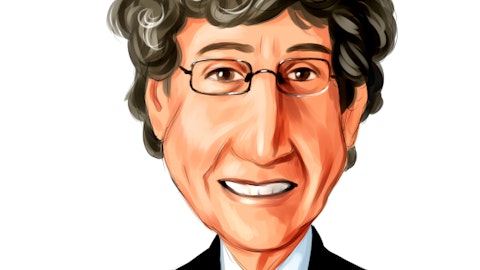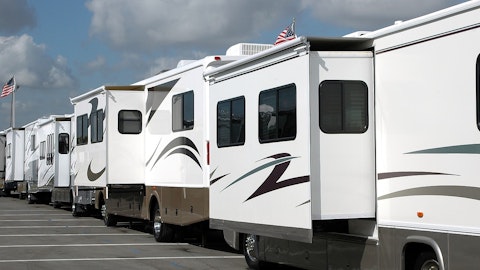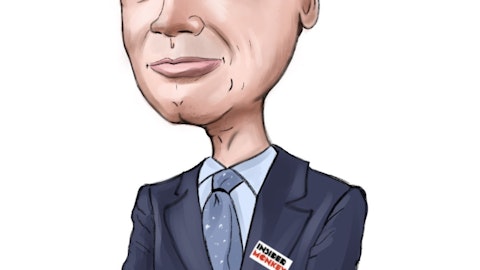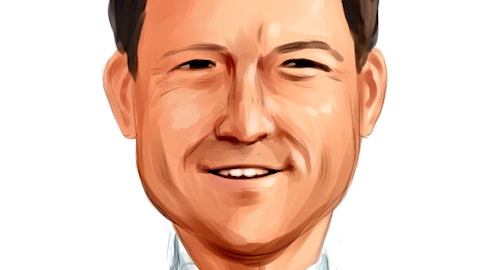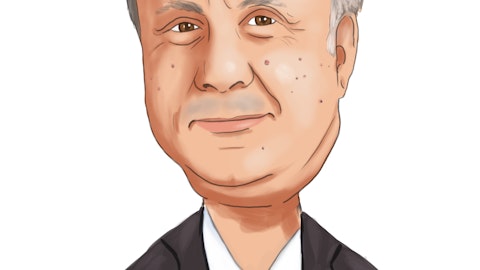Robin Farley: Okay. Now that’s very helpful. And if I could just fit one more quick one in please. I’m just wondering with the PWC did you mention there were some later than normal deliveries than you expected, is there a way to quantify were there some of those units where there were deposits on them that then were canceled due to how late they arrived and were dealers able to adjust their orders for next summer to sort of factor in that they would maybe have a little bit more inventory than they thought when they thought those units would have retailed? Thanks.
José Boisjoli: Yes. On this Robin, first, when we met the dealer at Club in August, they knew that those units would be delivered to them in August basically, then the booking that we took from the dealer for model year 2023 dealer knew that it was there then this is done. What we’re hearing, and again, we don’t have a hard debt on this, but most, all those units were pre-sold to consumers and there was some cancellation, but very, very little. And when you have a cancellation, you find a customer who is ready to take it because those units are at the dealer and they will be there next spring for the snowbell. And what we’re hearing is a portion of the customers take it now because they want to secure the delivery and everything, but many customers say, we will stick to our 2022 and we will take it when spring comes in the snowbell.
Then to be honest, we’re not worried about those units at all. And if in the spring we see that the retail is not going as expected, we could reduce or adjust model year 2023 or convert 2022 to 2024, we’ll adjust depending the retail trends. But right now, those 2022 for us is a non-issue.
Robin Farley: Great. Thanks very much. Thank you.
José Boisjoli: Thank you.
Operator:
Joe Spak:
Joe Spak: Thanks so much everyone. I guess the — I was wondering if you could comment on just working capital and then free cash flow, because you mentioned some of the changes in production and getting stuff to dealers, and I know working capital has been an issue really all year long. Should we expect some relief to begin in the fourth quarter or is that really more of a next year phenomenon at this point?
Sébastien Martel: Yes, good morning. Well, if you look at the numbers at the end of October, nine months that we’ve invested over $500 million in working cap coming from all the items that you’ve listed, and it’s a strategy that’s paid off for us in building more retrofit units and you see it in the retail numbers. I do expect a small relief happening in Q4 as the supply chain is improving, but nothing too material. And we’re still going to be running with high levels of working cap in Q1, Q2 of next year and as we get more comfortable with our suppliers delivering to the levels we want with the logistics headwinds that we saw around the world, obviously we’ll encourage the teams to reduce the working cap. If it happens, it’s probably going to happen in the tail end of next year. So the second half is when we should see improvements.
Joe Spak: Okay. Thank you. And then maybe one more since you delved into next year a little bit. I know interest expense was guided up a little bit here. Obviously, we know your capital structure, but with the floating rate. But I do think you have a good amount of cap contracts as well that limits your exposure there. So how far out do those go? I mean, I think you’re continuing to roll those. And I guess, considering where rates are now and the contracts is, is that like $130 million interest expense like a good level for next year?
Sébastien Martel: Well, the caps go out to 2025. So we’ve got — probably we’re hedged for about 60% or as a 1% cap. Obviously, we’ve seen rate — and that’s on the term beat. We’ve seen rate increases quite a tenor two rate increases since we talked one in September, one in November. We’ve also obviously done a few acquisitions. So we’ve used the revolver more and so that’s what’s driving the increase in interest. Next year, probably expecting in the range of 110, slightly higher as well because obviously, we’ll have a full year effect of higher rates, and especially the Fed is calling for further rate increases as well. So at a minimum, 110, but it could go higher as well.
Joe Spak: Thank you.
Operator: Next question will be from Martin Landry at Stifel. Please go ahead.
